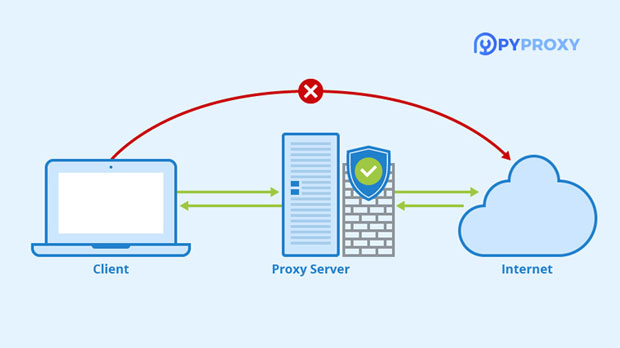In the rapidly evolving world of network security and data privacy, proxies have become essential tools for users who wish to ensure anonymity and bypass restrictions. Among the various types of proxies, SOCKS5 stands out as a popular choice due to its versatility and robustness. PYPROXY and Naproxy are two prominent players in the socks5 proxy arena, each offering unique features and capabilities. This article will explore and compare PyProxy and Naproxy, focusing on which one supports more application scenarios, examining their functionalities, use cases, and overall performance to help users make an informed decision. Understanding sock s5 proxiesBefore diving into the comparison, it's important to understand what a SOCKS5 proxy is and why it matters. SOCKS5 (Socket Secure 5) is the latest version of the SOCKS protocol, offering enhanced capabilities over its predecessors. Unlike HTTP or HTTPS proxies, which only handle specific types of traffic, SOCKS5 can handle a variety of protocols, including HTTP, FTP, and even UDP. This versatility makes it suitable for applications requiring more complex or varied network communication.One of the key benefits of SOCKS5 is its ability to support both TCP and UDP traffic, making it ideal for real-time applications such as VoIP calls, online gaming, and video streaming. It also provides higher levels of security by not altering or inspecting the content of the data being transmitted, ensuring that sensitive information remains private.PyProxy: A Comprehensive Solution for Proxy ManagementPyProxy is a Python-based socks5 proxy server that focuses on ease of use and customization. It provides users with a robust tool for managing proxy settings and optimizing performance in a variety of scenarios.Key Features of PyProxy:1. Customization and Flexibility: PyProxy allows users to configure the proxy settings in fine detail, making it suitable for both individual users and businesses that require specialized proxy configurations.2. Support for Multiple Protocols: PyProxy supports a wide range of protocols beyond SOCKS5, including HTTP and HTTPS, which gives it a broader application range.3. Advanced Security Features: It includes built-in encryption and tunneling features, which are essential for users concerned with security and privacy.4. Speed and Performance: PyProxy is designed for high-performance, supporting high-speed connections without significant latency, which is particularly beneficial for streaming and real-time communication.5. Integration with Other Tools: It can be integrated with other tools and platforms, making it ideal for use in complex network environments or for businesses looking to implement proxy solutions at scale.Application Scenarios for PyProxy:- Online Gaming: With its low latency and support for UDP, PyProxy is ideal for users in online gaming environments where real-time communication is critical.- Data Scraping: Due to its robust proxy management features, PyProxy can be used in data scraping and web crawling applications where anonymity is essential.- Bypassing Geo-restrictions: PyProxy allows users to access region-restricted content, making it useful for individuals who need to access content from different geographical locations.- Corporate Networks: Businesses can use PyProxy to manage and route traffic securely across a corporate network, ensuring privacy and optimizing network usage.Naproxy: A Lightweight, High-Performance Proxy ServerNaproxy is a relatively newer SOCKS5 proxy solution that focuses on simplicity and efficiency. It is designed for users who need a lightweight yet powerful tool for proxy management.Key Features of Naproxy:1. Simplicity and Ease of Use: Naproxy is known for its simplicity in setup and use. It requires minimal configuration and can be easily deployed for users who don’t need complex setups.2. High-Speed Connections: Naproxy is optimized for high-speed performance, ensuring minimal latency and fast data transfer, making it suitable for applications requiring rapid communication.3. Low Resource Consumption: Naproxy is designed to be lightweight, using fewer system resources compared to other proxy solutions, which is ideal for users with limited hardware.4. Security and Privacy: Like PyProxy, Naproxy also offers encryption to secure data traffic, ensuring that users’ online activities remain private.5. Cross-Platform Compatibility: Naproxy supports a range of operating systems, including Linux, Windows, and macOS, offering flexibility for different users.Application Scenarios for Naproxy:- Streaming and Video Conferencing: Naproxy’s fast data transfer speeds make it a great option for video streaming and conferencing applications that require high bandwidth.- Mobile Applications: Due to its lightweight nature, Naproxy is well-suited for mobile users who need a proxy solution that doesn’t drain resources or impact performance.- Anonymous Browsing: Naproxy can be used for anonymous browsing and accessing content while maintaining privacy, especially on shared networks.- Quick and Efficient Proxy Solutions for Personal Use: Users who need a quick and efficient solution for personal use may find Naproxy to be a practical choice due to its simplicity and ease of use.Comparing PyProxy and Naproxy: Which One Supports More Application Scenarios?Now that we’ve explored the key features and application scenarios of both PyProxy and Naproxy, it’s time to compare them directly in terms of versatility and support for different application scenarios.1. Versatility in Protocol Support: PyProxy is the clear winner here, as it supports a wider range of protocols beyond SOCKS5, including HTTP and HTTPS. This makes it more versatile in handling different types of network traffic, such as web browsing, FTP file transfers, and VoIP calls. In contrast, Naproxy is primarily focused on SOCKS5 and may not handle as many use cases. 2. Customization and Flexibility: PyProxy allows for more fine-grained control over proxy settings, making it ideal for businesses or power users who need to configure complex setups. Naproxy, on the other hand, prioritizes simplicity and ease of use, making it more suitable for individual users or small-scale applications that don’t require extensive customization.3. Speed and Performance: Both proxies offer high-speed performance, but Naproxy’s lightweight nature may give it an edge in environments where resource consumption is a concern, such as mobile applications or low-end hardware. PyProxy’s advanced features may come at the cost of slightly higher resource usage, but it compensates with more robust performance in larger, more complex environments.4. Security: Both PyProxy and Naproxy offer encryption features that protect users’ data privacy. However, PyProxy’s more advanced security features, such as tunneling and multi-protocol support, provide a higher level of security for users handling sensitive data.Conclusion: Which Proxy Is More Suitable for Your Needs?When it comes to determining which proxy supports more application scenarios, PyProxy is the more versatile option, offering greater customization, support for multiple protocols, and robust security features. This makes it suitable for businesses and users with more complex needs, such as data scraping, corporate network management, and online gaming.On the other hand, Naproxy excels in its simplicity and lightweight nature, making it an excellent choice for users who require a fast, efficient proxy for personal use, mobile applications, or streaming. If you prioritize ease of use and minimal setup, Naproxy could be the better choice.Ultimately, the decision between PyProxy and Naproxy depends on your specific use case, the level of customization you require, and the type of application scenarios you need to support. Both proxies have their strengths, but PyProxy stands out as the more comprehensive solution for a wider range of network environments.
Oct 27, 2025



































































